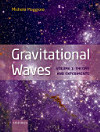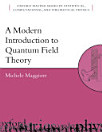A Modern Introduction to Classical Electrodynamics
ส.ค. 2023 · Oxford University Press
eBook
256
หน้า
family_home
มีสิทธิ์
info
reportคะแนนและรีวิวไม่ได้รับการตรวจสอบยืนยัน ดูข้อมูลเพิ่มเติม
เกี่ยวกับ eBook เล่มนี้
A Modern Introduction to Classical Electrodynamics is suitable for undergraduate students with some background knowledge of the subject and for graduate students, while more advanced topics make it a useful resource for PhD students and researchers. The book places much emphasis on the formal structure of the theory; beginning with Maxwell's equations in the vacuum, it emphasises the central role of gauge invariance and Special Relativity. After introductory chapters which include rederivations of elementary results of electrostatics and magnetostatics, and the multipole expansion, Special Relativity is introduced, and most of the subsequent derivations are performed using covariant formalism and gauge potentials, allowing for greater conceptual and technical clarity compared to more traditional treatments. The second part of the book covers electrodynamics in material media. This includes Maxwell's equations in material media, frequency dependent response of materials and Kramers-Kronig relations, electromagnetic waves in materials, and scattering of electromagnetic radiation. Finally, the text also includes advanced topics, such as the field-theoretical treatment of classical electrodynamics as a modern treatment of radiation reaction. These parts are meant for the advanced reader and are clearly marked, and can be skipped without loss of continuity.
เกี่ยวกับผู้แต่ง
Michele Maggiore obtained his Masters in Physics from the University of Pisa in 1986 and his PhD in Physics from the Scuola Normale Superiore in Pisa in 1990. Since then, he has undertaken postdocs in Bern and in Minneapolis, before becoming a permanent INFN researcher in Pisa in 1991. He spent a sabbatical at CERN in 2000 and, in 2001, became full professor at the University of Geneva, where he is now based. From 2011 to 2017, he was the Head of the Physics Department at Geneva University.
ให้คะแนน eBook นี้
แสดงความเห็นของคุณให้เรารับรู้
ข้อมูลในการอ่าน
สมาร์ทโฟนและแท็บเล็ต
ติดตั้งแอป Google Play Books สำหรับ Android และ iPad/iPhone แอปจะซิงค์โดยอัตโนมัติกับบัญชีของคุณ และช่วยให้คุณอ่านแบบออนไลน์หรือออฟไลน์ได้ทุกที่
แล็ปท็อปและคอมพิวเตอร์
คุณฟังหนังสือเสียงที่ซื้อจาก Google Play โดยใช้เว็บเบราว์เซอร์ในคอมพิวเตอร์ได้
eReader และอุปกรณ์อื่นๆ
หากต้องการอ่านบนอุปกรณ์ e-ink เช่น Kobo eReader คุณจะต้องดาวน์โหลดและโอนไฟล์ไปยังอุปกรณ์ของคุณ โปรดทำตามวิธีการอย่างละเอียดในศูนย์ช่วยเหลือเพื่อโอนไฟล์ไปยัง eReader ที่รองรับ





